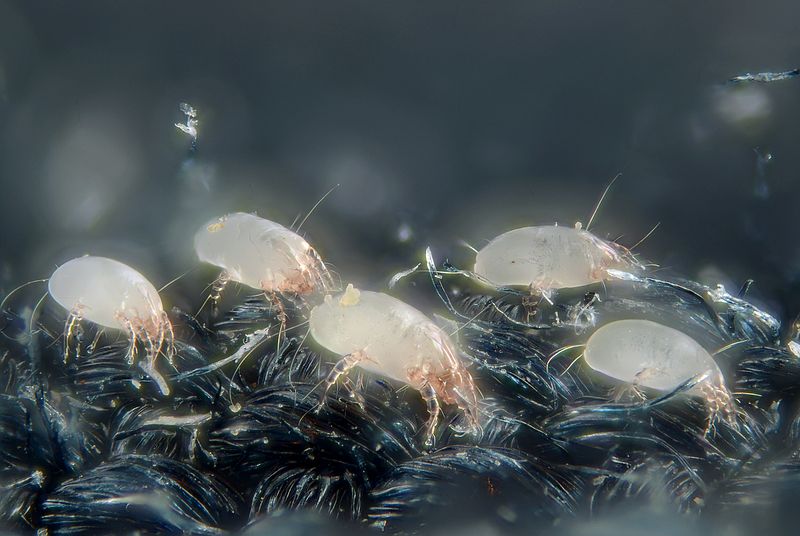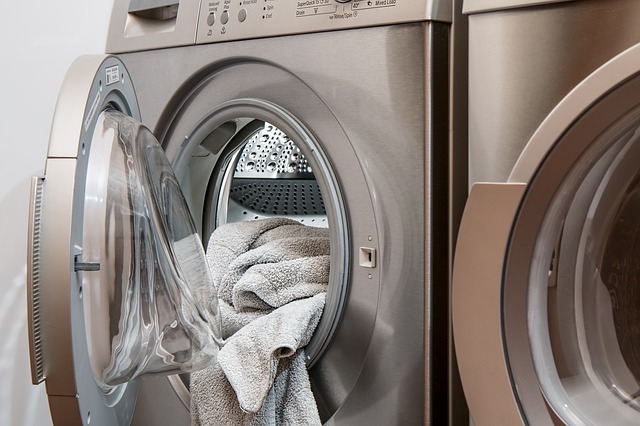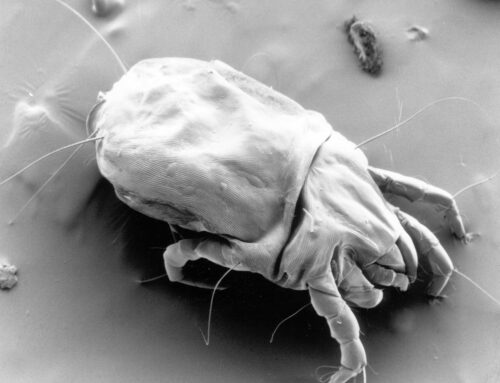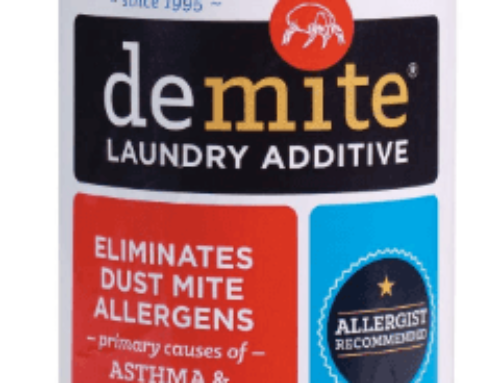Table of Contents
When you are constantly rubbing your eyes and having a congested nasal pathway, no thanks to the microscopic dust mites, you’ll be thinking of ways to kill the tiny little pests. And based on my experience, you can expect a lengthy war with the dust mites in your home.
What Are Dust Mites and Where Do They Breed

To overcome your enemy a.k.a dust mites, it helps to understand what they are and most importantly, their favorite hiding places in your home. Dust mites are microscopic bugs that are invisible to the normal eyesight, as they measure only 0.2-0.3 millimeters in size.
Dust mites itself are pretty harmless to humans, as they don’t bite on our flesh. This is a common misconception that became an urban myth. Instead, dust mites feed on the dead skin cells that fall off our body and hair. Any individuals would have shed enough dead skin cells to feed a colony of dust mites in their home.
What makes dust mites a concern for our health is the protein that is produced in their feces or when they shed off the exoskeleton. The protein is the cause of allergen in many people around the world.
You can suspect yourself suffering from dust mites allergy if you start having red, teary eyes, itchy throat, and eventually nasal congestion, especially when you’re staying indoors. These symptoms could take a serious turn into developing asthma problems, especially in children.
Can Dust Mites Be Killed?
If you’re to triumph over unseen enemies, especially tens or hundreds of thousands of dust mites, you need to be assured that they can be killed. Fortunately, dust mites are just like any other pests. They have a lifespan of 19 to 70 days, depending on the gender and thrive in a specific environment.
Dust mites enjoy a warm and humid environment, with the temperature ranging from 20 to 25 degree Celcius and the humidity between 70% to 80%. You’ll find the bulk of them in your mattress, pillows, and other bedding items, where you spent an average of 8 hours sleep, and shedding millions of dead skin cells.
Other areas that can be the perfect home for dust mites are carpets, rugs, upholstery furniture, boxes, cushions and other dust-trapping areas that are warm and humid.
You can kill the dust mites by cutting off its food supply, disrupting its ideal environment or actively terminating them. Of course, the first option is almost impossible, as you can’t stop shedding off dead skin cells.
That leaves us to the second and third options.
8 Ways To Kill Dust Mites For Good
If you’re planning to strike back at the dust mites with a vengeance, here are a few great ways.
1. Lower Temperature Of Your Room (or Home)
Dust mites reportedly have an optimum growth between 20 to 25 degree Celcius. To disrupt their ideal breeding condition, you can adjust the temperature of your home to lesser than 19 degrees Celcius. You may still feel comfortable with a cooler temperature, but it is enough to disrupt the growth of the dust mites.
2. Decrease Humidity
When your home is badly ventilated, vapor naturally builds up and a high concentration of them only means a perfect place for dust mites. If you’re suspecting that the humidity in your home ranges between 70% to 80% ( you can check with a humidity probe), start airing the air by turning on ventilation fans and keeping the windows open.
But if you prefer a more effective solution, do get a dehumidifier or turn on your air conditioner for a more regulated humidity. If there’s any specific humidity point you should aim for, it’s anything below 50%. It will be sufficient to reduce start making life uncomfortable for the dust mites.
3. Wash In Hot Water

Dust mites could not survive temperature above 130 Fahrenheit (54 degrees Celcius). Wash bedding linens, pillowcase, curtains, rugs or any other fabrics in hot water to kill the dust mites. Turn the heat up in your washing machine and dryer to put an end fo the infesting dust mites.
It’s important that you wash all fabrics that are likely to be populated with dust mites at least once a week. It helps to keep the dust mites population under control, and more importantly, remove the fecal pellets that cause allergy.
4. Use Steam Cleaners
Let’s face it. Sometimes we have lazy days where we don’t feel like removing the bed sheets, pillowcases, and dozen other items on a weekly basis to wash. In that case, investing in a portable steam cleaner can be a great option.
In fact, the temperature of a steam cleaner easily reaches 100 degrees Celcius, way above what a washing machine is capable of. You’ll be getting rid of other bacterias and fungi at this temperature besides dust mites.
5. Freeze
An alternate way to kill the dust mites is to bring the temperature down to the other extreme. For items that you can’t wash with a machine, e.g. soft toys and pillows, you may want to find a space for them in your freezer. Make sure that you put them in a plastic bag before freezing the items for at least 24 hours.
6. Sprinkle Diatomaceous earth
Sprinkle what? I was as bewildered as you are when I first heard of Diatomaceous earth. It is a complicated name that defines tiny fossilized organisms that are found in the river, lake, and ocean.
What makes the Diatomaceous earth so dangerous for dust mites? Diatomaceous earth is not toxic in nature, but it has the ability to pierce the exoskeleton of the dust mites and drain them of oils and fats. If you’re using Diatomaceous earth, minimize exposure to the eye or nose, as it could cause irritation as well.
7. Natural Anti-Fungal Tea Tree Oil
If you’ve been using tea tree oil to treat acne, or eczema, spare some as a natural remedy to banish dust mites from infested fabrics. Just mix a 1-2 tablespoon of tea tree oil into a cup of distilled water and spray it over pillow or mattress.
Not only does it get rid of dust mites, the anti-bacterial and anti-fungal properties of tea tree oil also helps to disinfect your beddings from other germs, fungal and molds. Remember to keep the mixture away from the light as the properties of tea tree oil are sensitive to light exposure.
8. Disinfectant Spray
Sometimes, you’ll wish you don’t have to go through the hassle of dumping pillows into freezers or getting uncomfortably cold just to get rid of the annoying dust mites. There are many forms of disinfectant spray that you may use to remove dust mites from your home.
A popular disinfectant is Lysol, as it claims to kill up to 99% of allergens. This includes bacteria, fungi, and viruses that are common in your home. As effective as it is, you’ll want to use it with care, as Lysol is not organic, and contains a great number of chemical names that you’ll find hard to pronounce.
Alternatively, you can opt for natural dust mites spray, which is made of natural ingredients. They are probably not as potent as their chemical-based counterparts but definitely a safer option for humans.
Have you tried any of these methods to kill dust mites in your home? What works for you? Or did I miss out on a great solution? Share your thoughts and tips in the comment below.
Related:




Leave A Comment